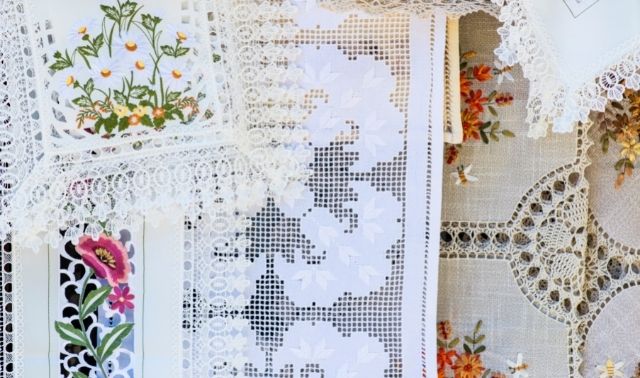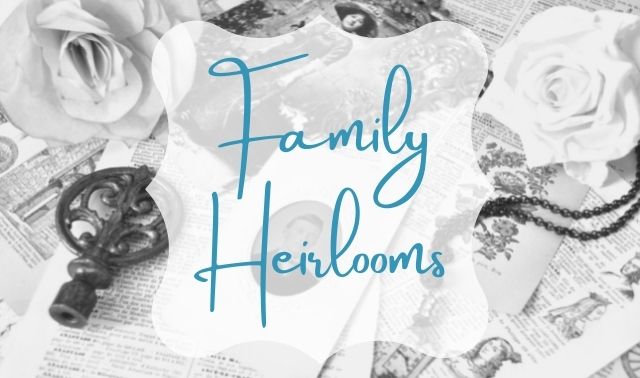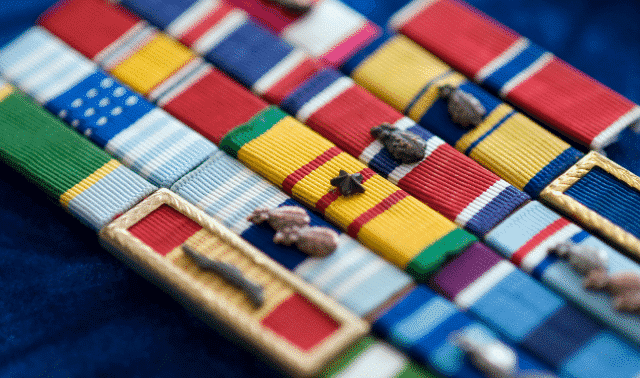Sign up for the Family Tree Newsletter Plus, you’ll receive our 10 Essential Genealogy Research Forms PDF as a special thank you!
Get Your Free Genealogy Forms
"*" indicates required fields

Today’s holiday table is more likely to be set with bamboo placemats than the carefully hand-stitched and ironed linens used by our great-grandmothers. Pull out your heirloom linens and take another look at the social history of your family.
1. Start with what you know about the artifact’s history
Textiles can show evidence of ethnic connections and the skill and craftsmanship of the embroiderer. Write down what you know about the artifact: who made it and when it was made, when it was used, and who were the previous owners. Your heirloom history may help solve a family history puzzle. Keep one copy with your genealogy research notes and another copy written on acid-free paper stored with the linen.
2. Heirloom linens beg for the same care you would give a special occasion suit or dress
Handle carefully and always launder before storing. It’s a good idea to wear a pair of white cotton or nitrile gloves when handling textiles to protect the cloth from body oils and lotions. Inspect table linens for stains or tears, unfolding carefully over a table covered with a clean white sheet. If the cloth was ironed and folded, be especially cautious handling fabric at the fold lines where weakened threads often break or tear.
3. Light is the #1 enemy for any kind of textile — tablecloth, quilt, wedding gown
Everyday sunlight, light from household fixtures, and indirect light all aim harmful ultraviolet rays on fragile thread and fiber. Maximize the life of your heirloom by minimizing exposure to UV light.
4. Avoid hanging large textiles for long-term display
Most heirloom textiles are far too fragile to support the weight of hanging from one edge. Instead, gently spread out the item on a clean, dry surface. Display textiles like a museum by carefully placing for viewing and enjoyment, and then returning to preservation storage away from light, dust, and handling.
5. Some relatively sturdy linens such as mid-century vintage tablecloths, napkins or towels, are fun to use and enjoy in your home
Remember to launder or dry clean after use and store away from light and dust. Cotton and linen fabrics are actually quite strong and made to last many years. Take care to launder on a gentle cycle or hand wash using a mild detergent. Test a small part of any embroidery to see if the thread in color-fast. Wash only in cool water and air dry away from direct sunlight. Iron carefully, protecting embroidery by pressing on the reverse side of the fabric or by using a pressing sheet to protect the threads.
6. Old gravy stains, grease, and other damage can be difficult to repair
Depending on the item’s age and condition, it’s often better to “embrace” the history of your heirloom than to attempt home cleaning solutions. Consult with a professional textile conservator for repairs or cleaning of valuable or rare items. Your local historical society or the American Institute for Conservation may be able to help you locate assistance in your area.
7. Be sure to store your linens right
It’s best to store heirloom linens by rolling the cloth over an acid-free cardboard tube padded with a layer of acid free tissue paper or polyester batting. Another option is to fold the cloth and pad creases with acid-free tissue. Place the folded or rolled cloth inside a white cotton pillowcase to protect your treasure, and store special linens in a drawer or acid-free box away from harmful UV light, dust, and pests. Prevent yellowing from contact with wooden drawers by sealing the wood with a coat of polyurethane varnish or lining drawers with a clean white cotton sheet.
Family History Q&A: Expert Advice on Caring for Heirloom Linens
Fall and winter often bring friends and family around the table for casual get-togethers and holiday feasts. Share your family history this season by unpacking the heirloom linens and china for display or for your holiday table.
Q: I inherited a white embroidered cutwork tablecloth my great-grandmother made in Russia. It appears to be linen. I’ve stored it rolled up in a drawer for 30 years. How can I safely display the cloth to share its story?
A: Handmade textiles such as your whitework tablecloth are often a favorite family keepsake. You can imagine the hours spent carefully stitching the heirloom cloth and almost feel the connection to your great-grandmother as you touch its fabric. (See the opposite page for more on often-inherited needlework heirlooms.)
You have good instincts to roll the cloth—which prevents creases and breakage along fold lines—and store it away from harmful UV lighting. Any light source, whether natural or from lamps and fixtures, is harmful to fragile textiles.
Wearing white cotton gloves to protect the cloth from skin oils, carefully inspect it for any stains, tears and other damage. It’s best to clean linens and textiles before storing, but avoid using detergents (including homemade ones) unless directed by a conservator. Instead, lightly vacuum any surface dust with a nylon screen over the vacuum hose to diffuse the suction. Depending on the condition of your tablecloth, you may want to seek help from a professional textile conservator for repair or cleaning www.conservation-us.org.
You could roll linens around an acid-free tube, or carefully fold a cloth and pad the folds with acid-free tissue. Then place the item inside a 100 percent cotton pillowcase to protect it from dust and handling, and store it in a drawer or archival box (find suppliers listed at ). Contact with wooden surfaces will cause the fabric to yellow over time, so you can provide a barrier by sealing the wood with polyurethane or lining the drawer with clean cotton sheeting.
Avoid storing heirlooms in plastic, which can cause yellowing and trap moisture. Your home archive should be located inside your home where the temperature and humidity are consistent, and items are protected from light, dust, pests and odors.
To display the tablecloth at special occasions, gently spread it over a clean, dry surface. If the fabric is sturdy and you choose to serve food on it, have it cleaned immediately after use (even if it doesn’t look dirty) by a professional dry cleaner experienced with antique table linens.
A version of this article appeared in the October/November 2015 issue of Family Tree Magazine.
ADVERTISEMENT



